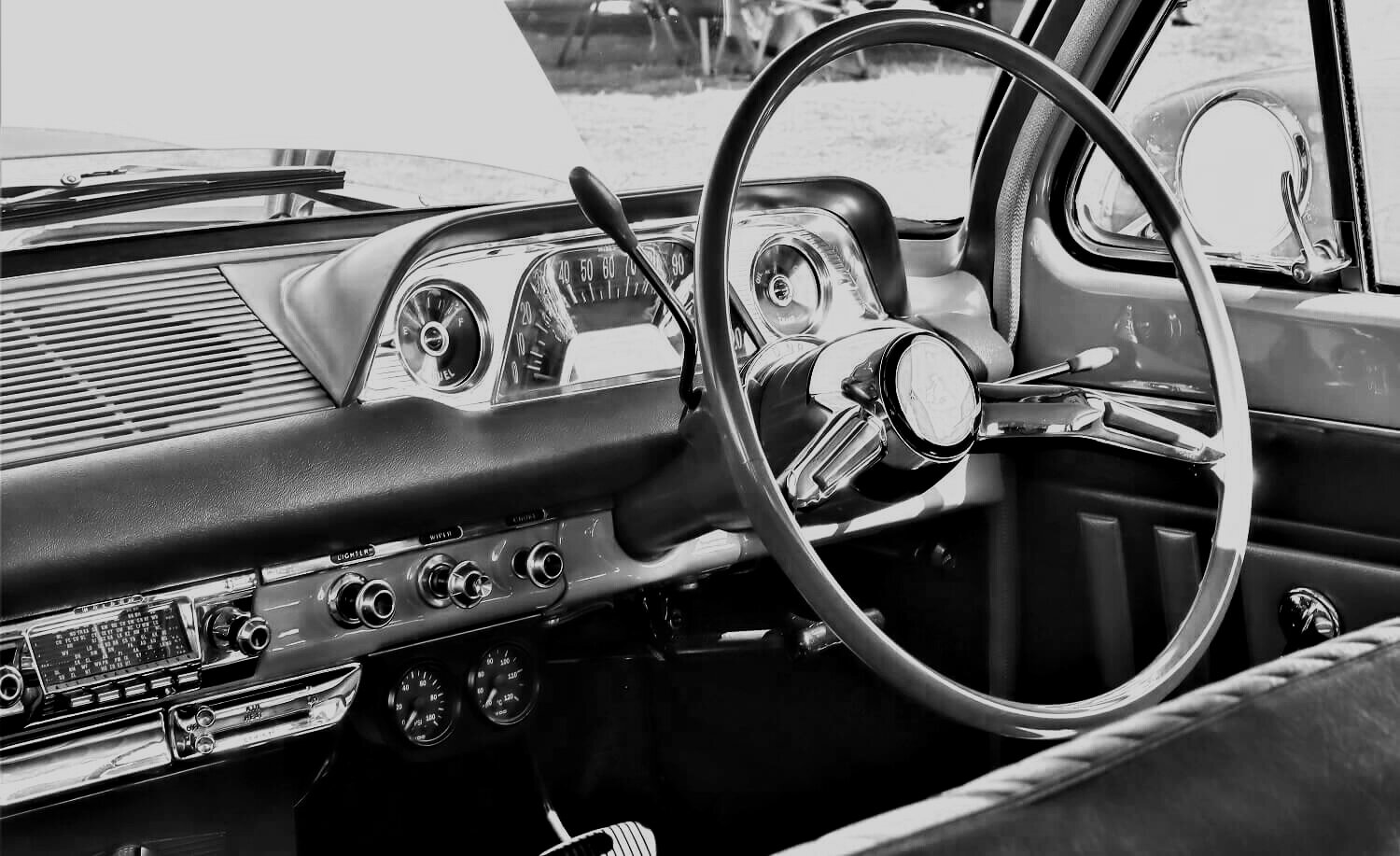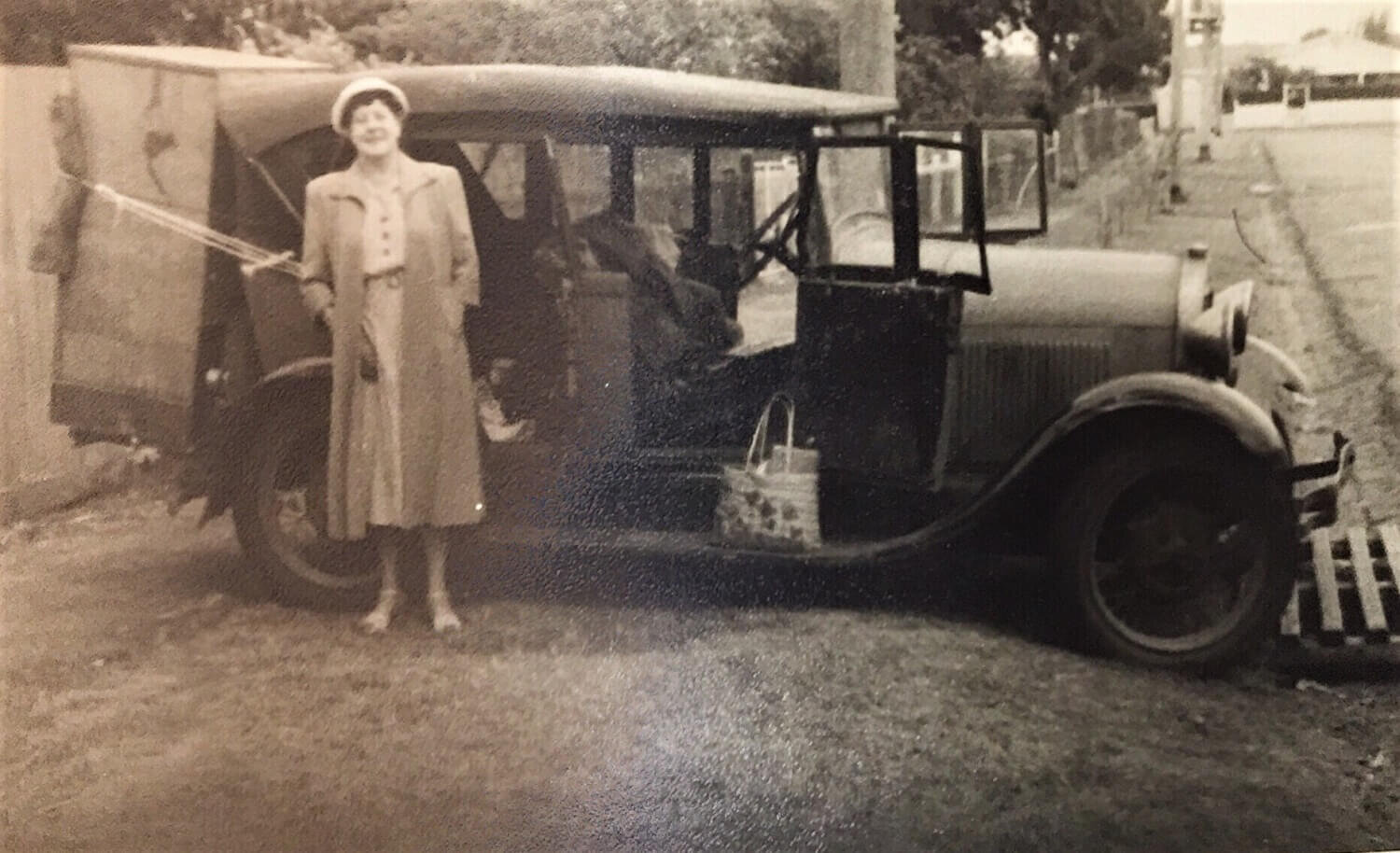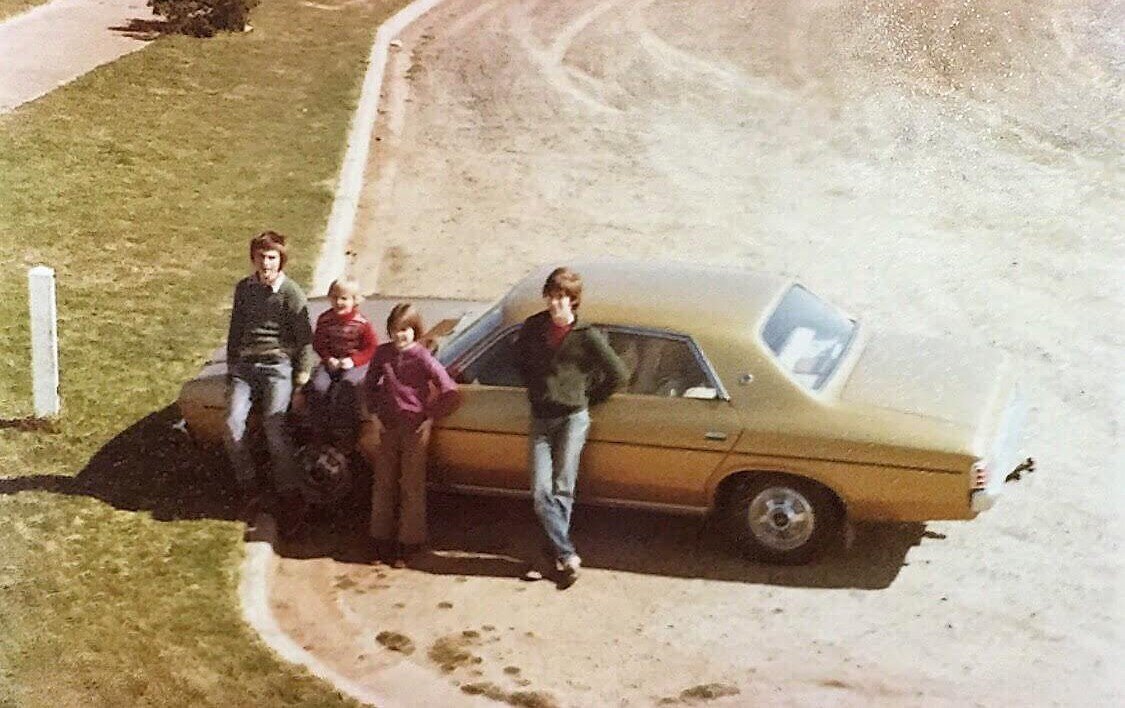
The Story of the Australian Car Industry
120 YEARS IN 5 MINUTES
Many talented storytellers have narrated the bumpy ride of our car industry and the impact it had on Australian life. There are plenty of non-fiction books and documentaries that delve deep into the industry, the cherished marques and the celebrated cars.
Here, we are going to contribute to a fraction of the literature that’s already created. It’s our attempt to tell the story of the Australian car industry in as few words as we possibly can. If you hadn’t taken much interest in the industry before, this will paint a basic picture of what it was about.
So, a couple of hundred words to cover a century of Australian car building history. Let’s do it.
Above: A classic Holden interior
Transport Transformed
We were there from the start. When the motor car snatched the mantel as the best way to travel at the start of the 20th Century, Australian ingenuity saw a number of small-scale manufacturers making cars for the elite. The platform and the running gear tended to come from overseas, but we got pretty good at making the rest.
Early on, the big American marques had an eye for Australia. Ford put a stake in the ground in Geelong and began churning the Model T out of a sizable factory on the hill, with other plants scattered around the country including one owned by Holden’s Motor Body Builders in Woodville, Adelaide.
The car industry was here to stay, but momentum stalled when we went to war not once, but twice within the space of two decades. Passenger car assembly lines had to support the war effort, rather than build cars. The Great Depression in the thirties didn’t help either. Put simply, we hadn’t had much of an opportunity to mass-produce our very own motor car until the late forties.
Above: Early Australian motoring history on the streets of Sandringham, Melbourne
Our Own Car
We came out of World War II badly battered, but eyeing a more peaceful and prosperous future. Hurtling toward the fifites, there was a renewed push for Australia to produce its own car to shoulder the adventures of a growing middle class. The government invited companies to put their best put forward and show that they could make it happen. Holden did the best job.
Their functional, elegant and reliable motor car proved a big hit. In fact, they couldn’t produce enough examples of their new four-door sedan to meet the cheque books being waved in every direction. It was the perfect car for Australia and conditions were ripe for building motor cars on our shores. This led to some big investments by the dominant automotive companies of the day led by the Americans and the British.
Above: A Holden FX sedan
The Golden Era
Our car industry was booming. By the 1960s, the big three from across the pond dominated the Australian market and the four-door sedan had the undivided allegiances of households as part of the ‘Great Australian Dream’. After all, what was a pleasant home in the suburbs without a local car built by your neighbour sitting in the driveway?
Inspired by the brawny cars built by our American parent companies, Australia discovered its own automotive flare in the late sixties. Ford Australia squeezed a thumping V8 engine into their fast-selling Falcon. General Motors Holden hit back with the Monaro hardtop and not to be outdone, Chrysler got in on the act with the Valiant Charger. The performance of these models left petrolheads weak at the knees, but the horsepower war was destined for an armistice with growing public concern about what could happen if an ordinary motorist planted their right foot.
The more subdued models held the fort, even as fears of fuel shortages spooked the horses in the seventies. Australian-built cars were everywhere. From the country to the big smoke, one glance at a busy street confirmed their dominance. They weren’t always our own design, but with plenty of protection from price competition against cars that arrived on a ship, setting up shop in Australia made economic sense.
However, it also set up our downfall.
Above: Perfect for the family. Siblings stand beside a late seventies Chrysler Valiant Regal
Twilight
Plants began closing in the 1980s. We weren’t as productive as we should have been and despite the protection, imported motor cars kept on creeping into our market. It didn’t happen overnight, but the seeds were sowed for grimmer times. Still, tens of thousands of people of many different ethnicities strode into factories on any given morning.
We had to find a way to compete to ensure the future of the industry and the living it provided to working class households. With imports an ever-growing factor in the Australian new car market, the Button Plan emerged. The idea was to get seriously good at producing fewer models, sharing them between local manufacturers and consolidating our efforts to compete here and abroad. After all, being such a small market, scale was our biggest hurdle.
The trimmed range of Australian motor cars continued to attract buyers at dealerships, but the case for parent companies continuing to invest in Australia became harder and harder to make as the playing field levelled.
Above: A rest stop during a Holden test trip. Image courtesy of Mario Turcarelli
The End
Mitsubishi Motors Australia was the first domino to fall in the 21st Century. The South Australian giant couldn’t justify a continuation of production at Tonsley Park. At the time, Holden, Ford and Toyota were still atop of the sales charts, but their buffer was being eroded by the month as the new car market became yet more competitive.
Further to this, once so loyal to the local sedan, station wagon and ute, many car buyers’ eyes gradually wandered to other products. Some favoured downsizing into fuel-efficient hatchbacks that suited the city and inflicted less financial damage at the petrol bowser. We weren’t making many of those. Others wanted to upsize into four-wheel-drive style vehicles with an elevated driving position that felt commanding and could bash through the bush, just as the commercials promised. Only Ford Australia manufactured one as other local arms struggled to get a business case off the ground.
By 2013, the end was nigh.
Announcements filled with emptiness confirmed the impending discharge of thousands of workers on the factory floors. Some workers had never known of any other occupation. Inevitably, many local component suppliers had no choice but to do the same.
Ford Australia pulled the pin on the Falcon passenger sedan after an uninterrupted 56-year production run in October 2016. That meant the end of the Australian-built Territory, too. Ford had sizable manufacturing facilities in the northern Melbourne suburb of Broadmeadows and in the working class Geelong suburb of Norlane.
12 months later, Toyota Australia switched off the lights at its Altona plant in Melbourne’s west. Days later, the last Australian-built Holden Commodore travelled down General Motors-Holden’s Elizabeth assembly line north of Adelaide, all but spelling the end of the Australian-built car.
Post 2017, we no longer mass-produce cars. It might not be over forever, but for now, we are left to ponder the ashes of an industry that meant so much to many Australians.
Above: Australian Ford workers mark the end of the company’s long manufacturing run in 2016. Image courtesy of Ford Australia
After the Factories Fell
On a brisk morning in Devonport, an elderly lady pats the steering wheel as her old Ford Fairlane coughs and splutters to life once more. It’s had a hard life, but the aging luxury sedan completes the Sunday morning trip without fail.
In Adelaide, a young family giggles at the sound of a General Motors-Holden bent eight powerplant snarling out of a suburban roundabout. Their Holden Commodore passenger sedan represents years of strict saving, but it carts the groceries with a thrill that proves difficult to match.
In Parkes, an aging father stands back to admire his Chrysler Valiant Pacer. Catching a glint of sunlight off the Hemi Orange paintwork, memories of long summer afternoons travelling between country towns in New South Wales come flooding back.
The Australian-made car was, and remains, something we should all be proud of. After all, our family members, our friends and our neighbours played their part in building these things.
What makes Australian cars so endearing to their proud owners and covetous admirers alike? Is it the company they provide on long journeys? Is it the sound of their motors firing into life? Is it the carefully shaped steel concealing the violent process of internal combustion?
Reasons may differ, but the Australian-made car was, and remains, something we should all be proud of. After all, our family members, our friends and our neighbours played their part in building these things.
We have every reason to thank them and to cherish what they made, right here in Australia.
Above: An Australian-made Chrysler in the suburbs
Characters, Cars and Careers
Would you like to see somebody featured on Chasing History?







